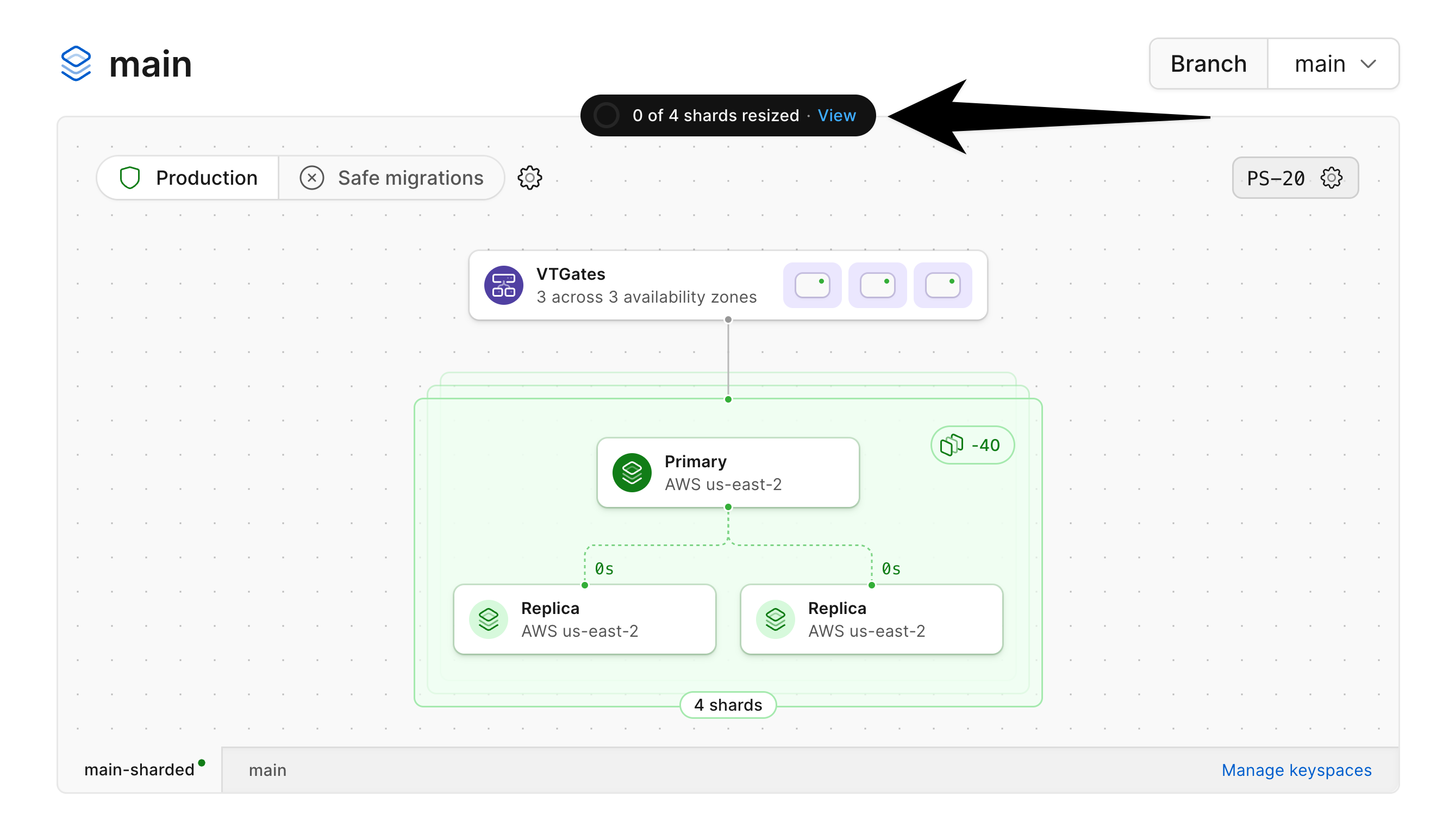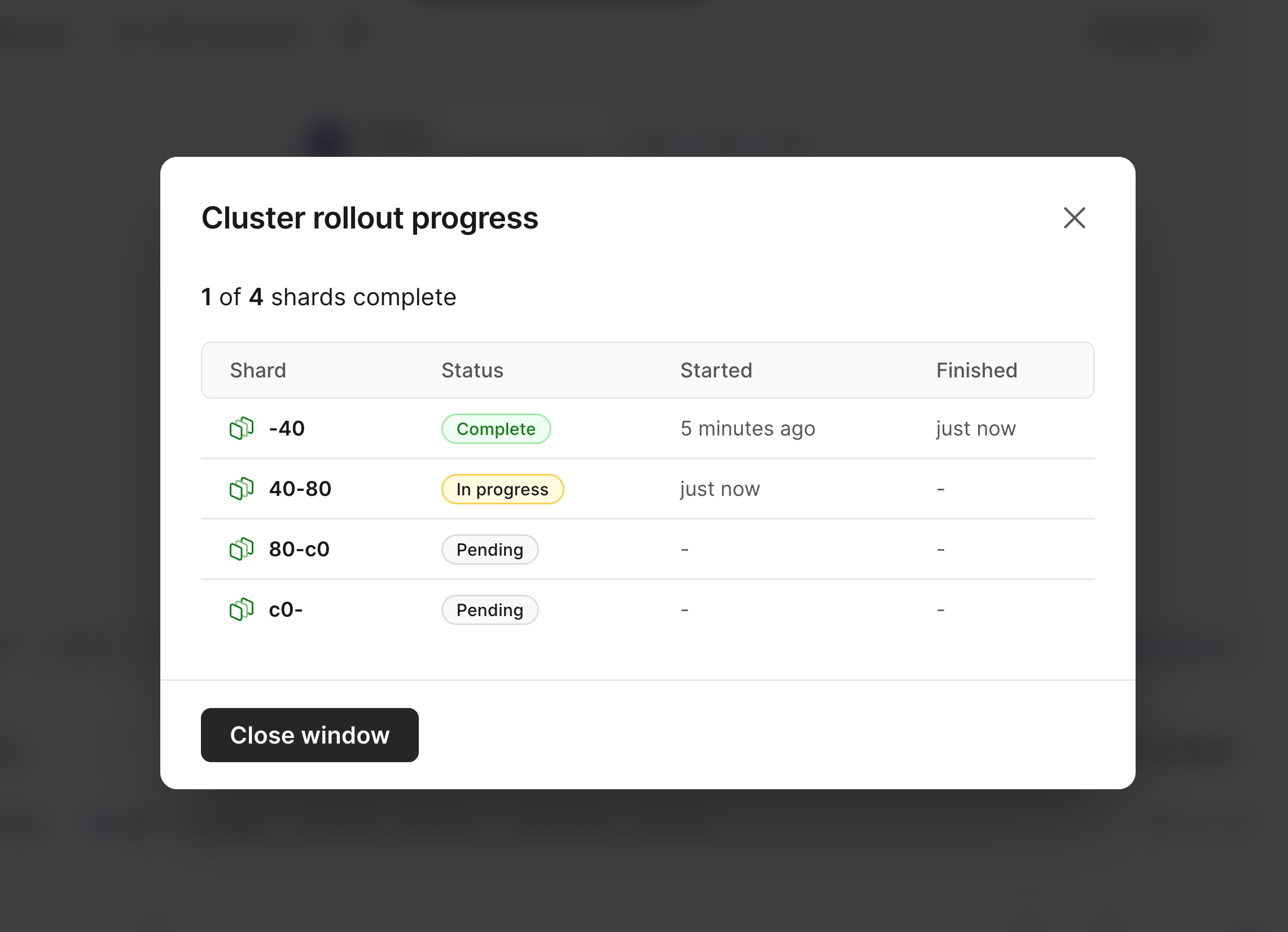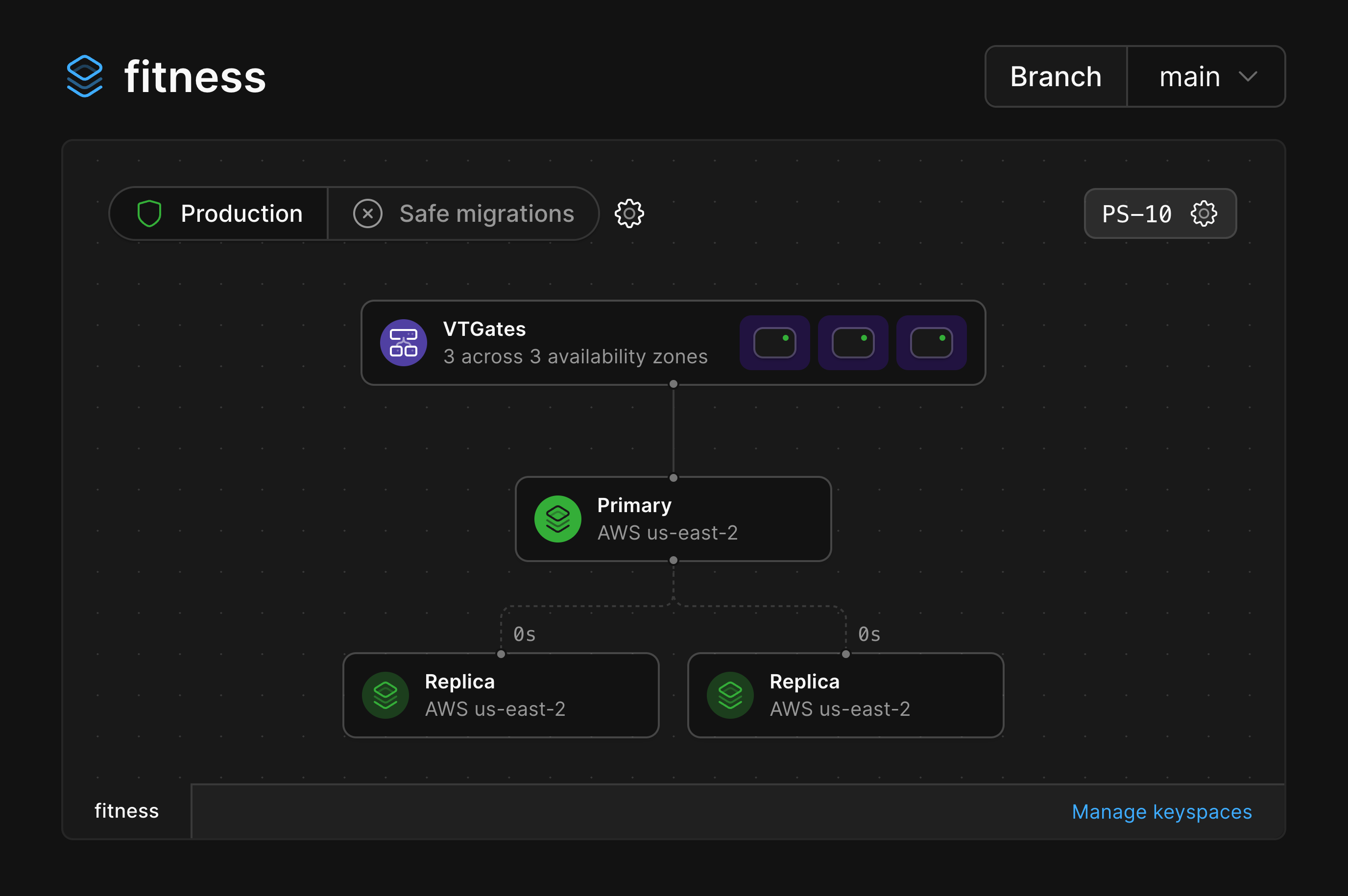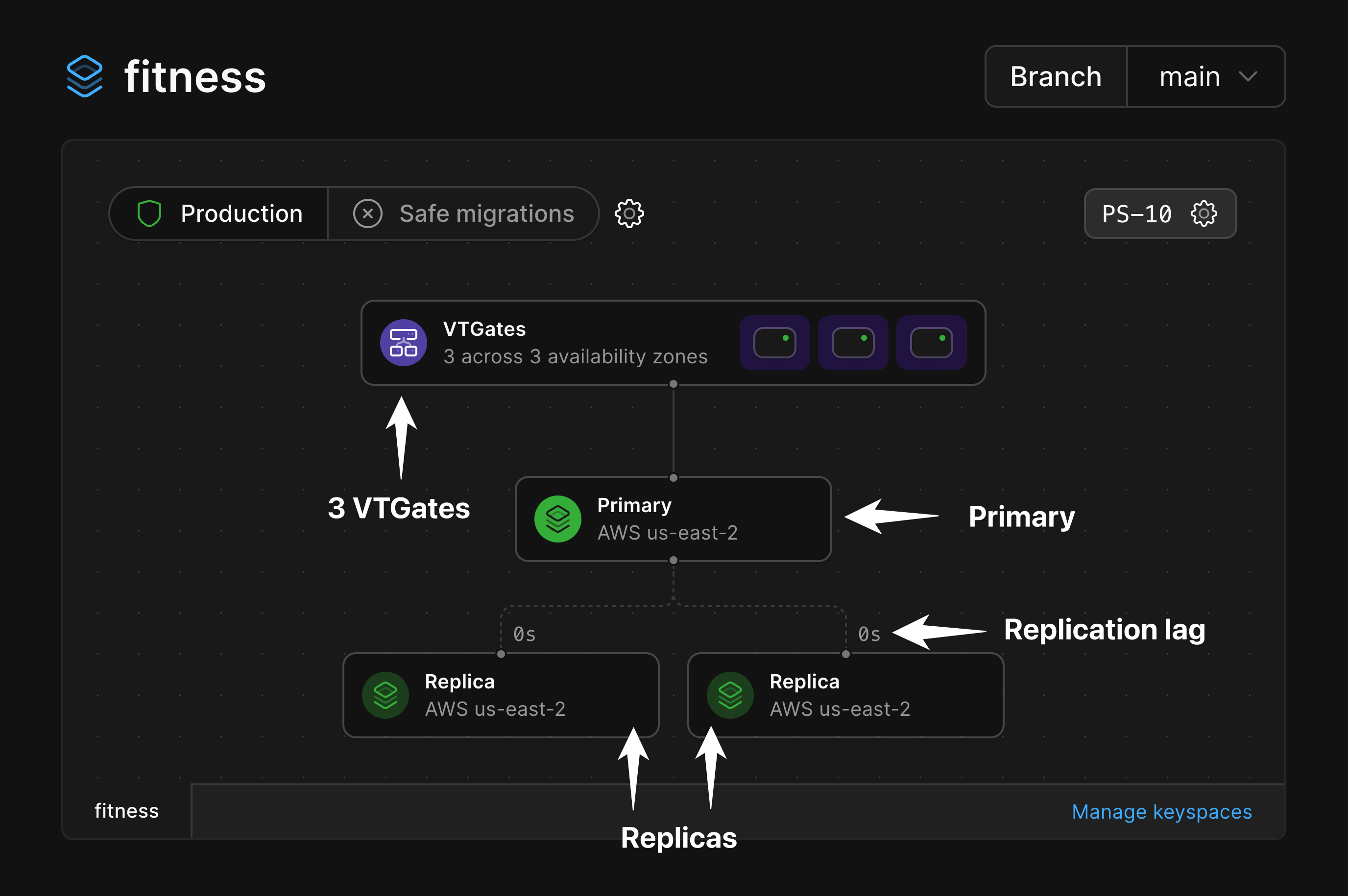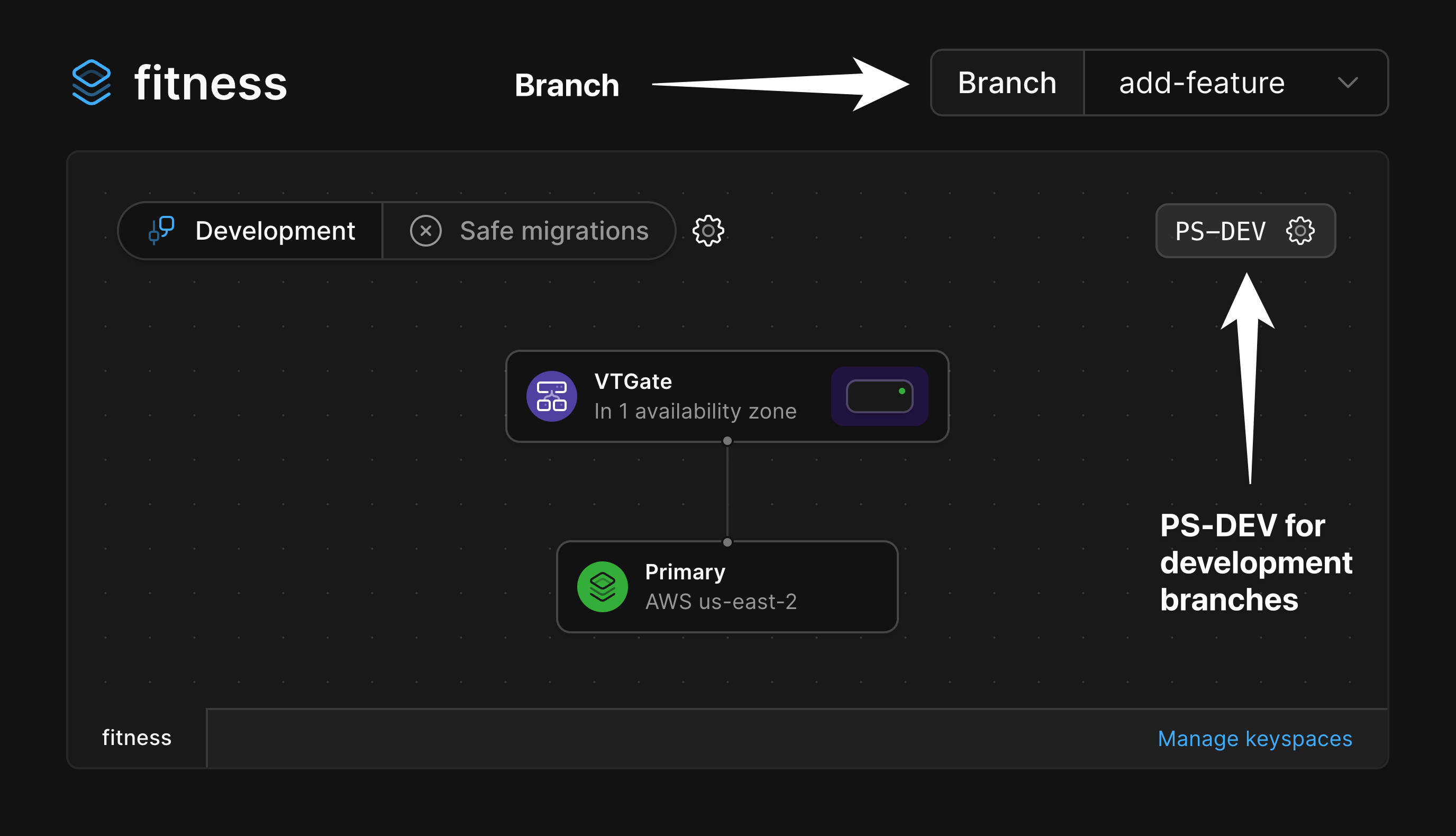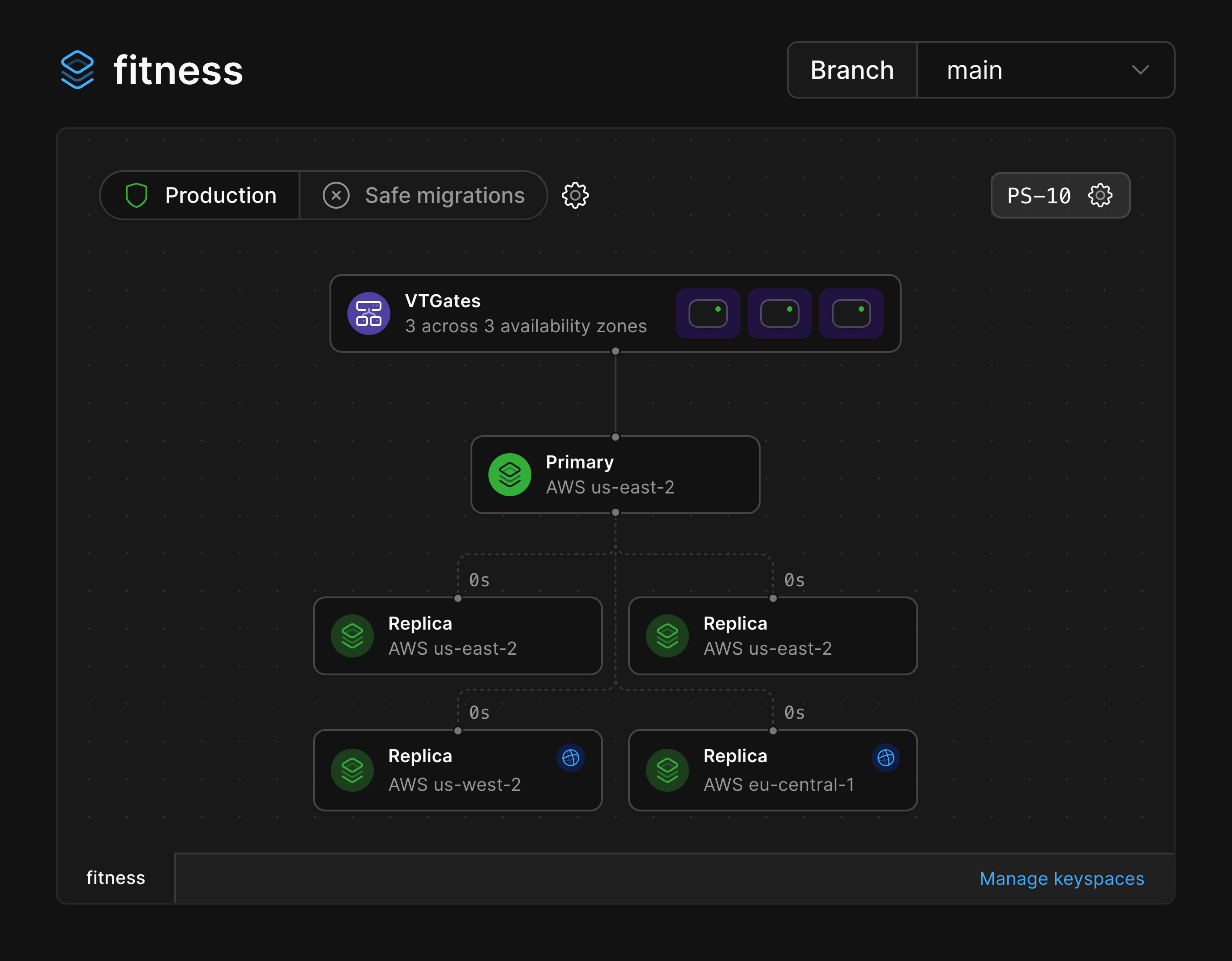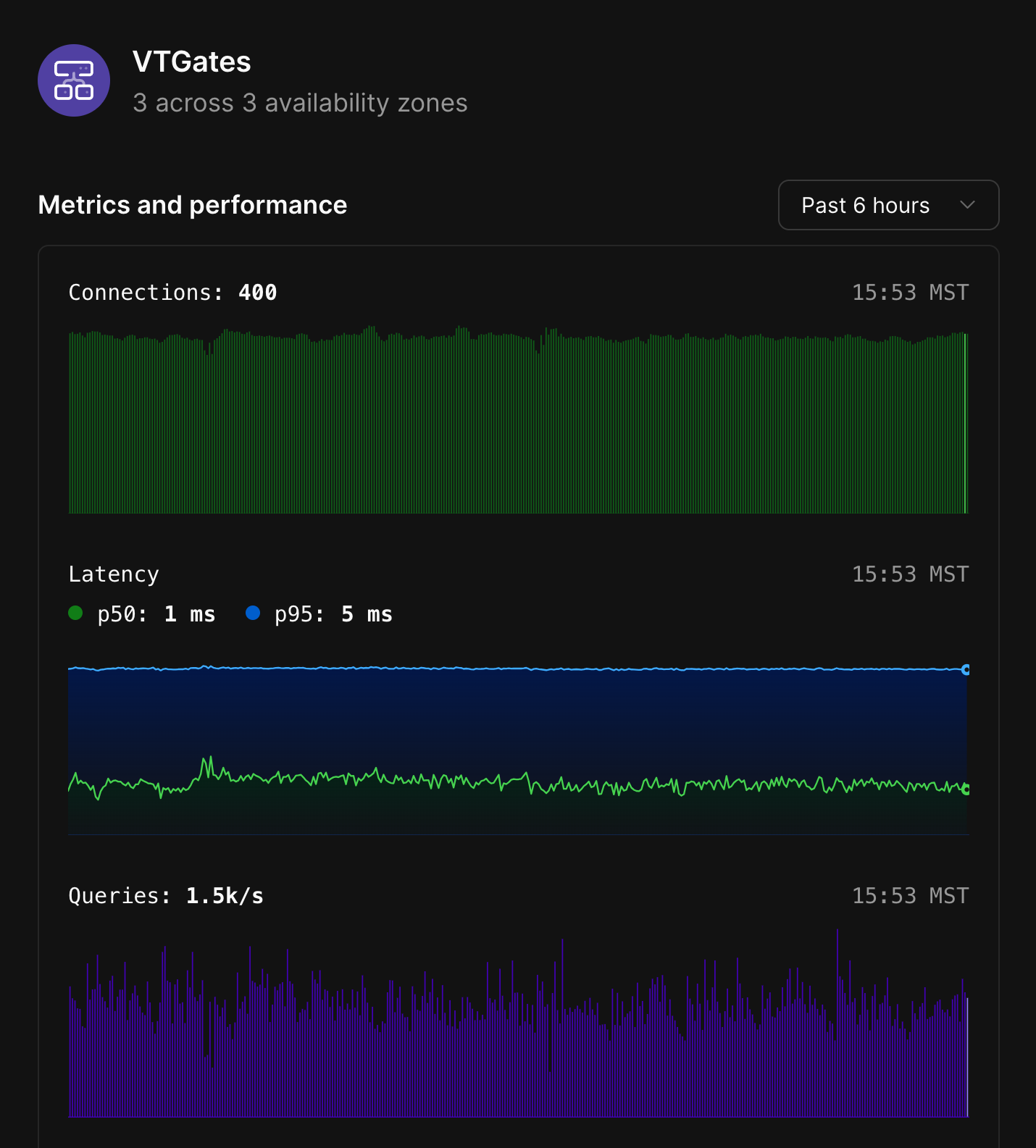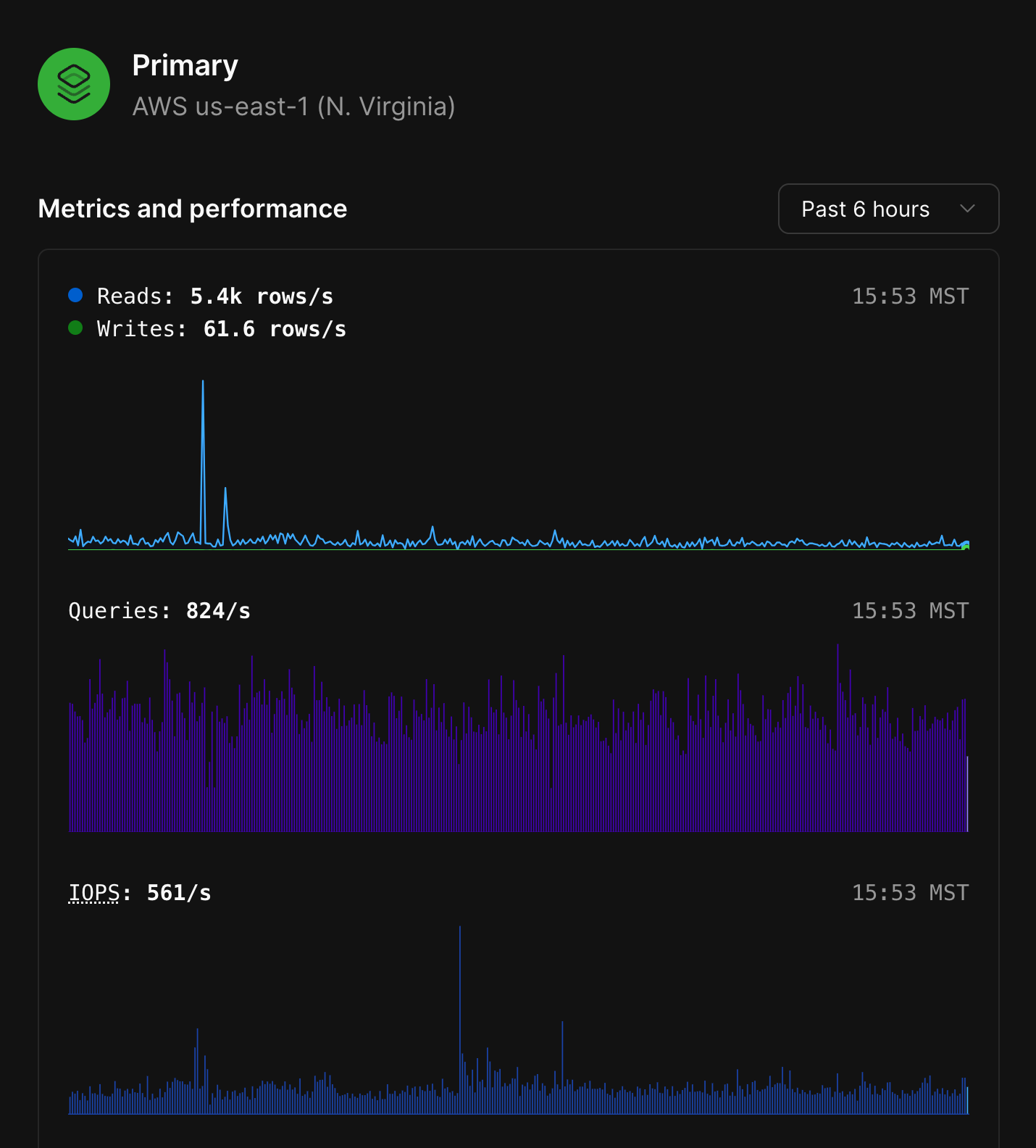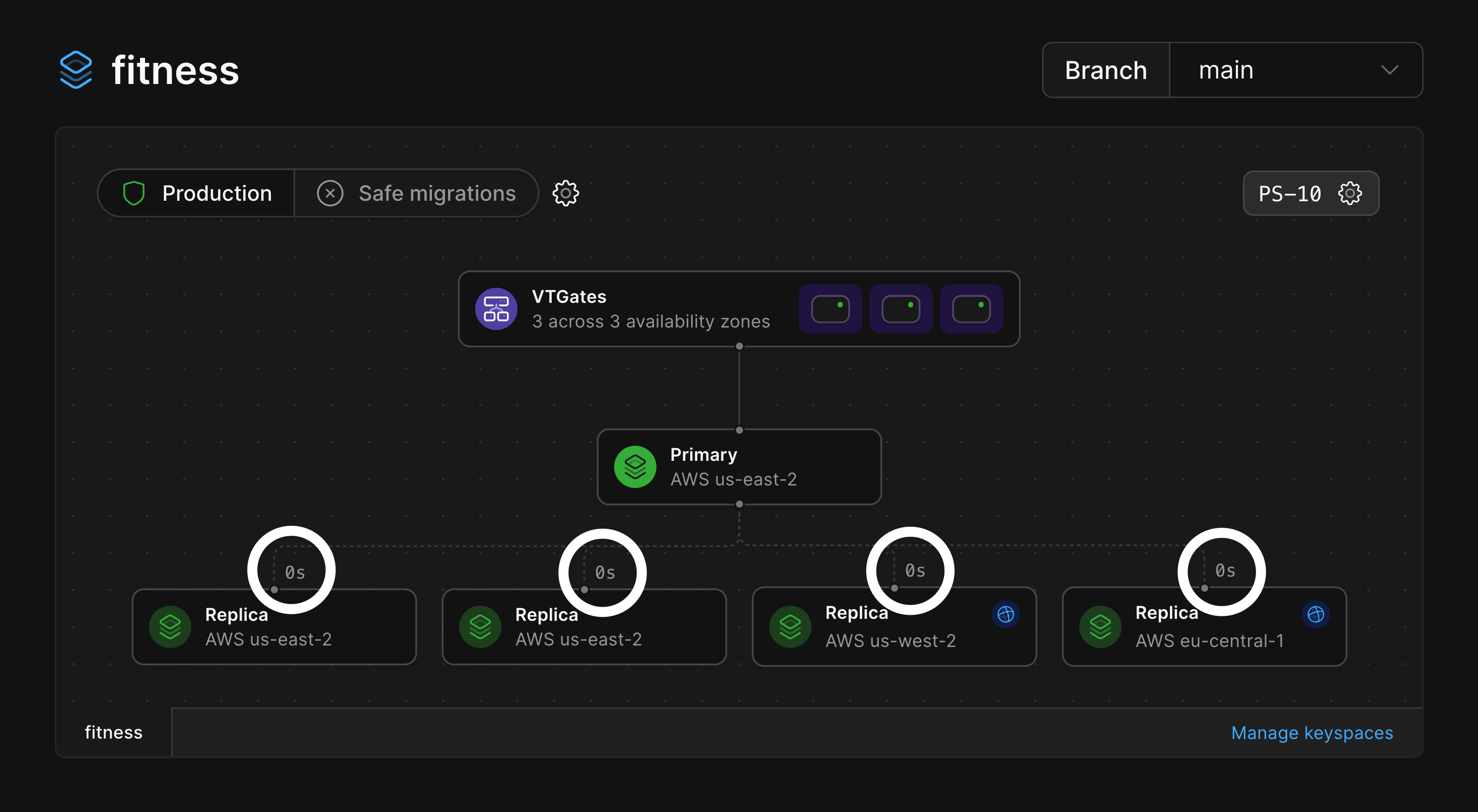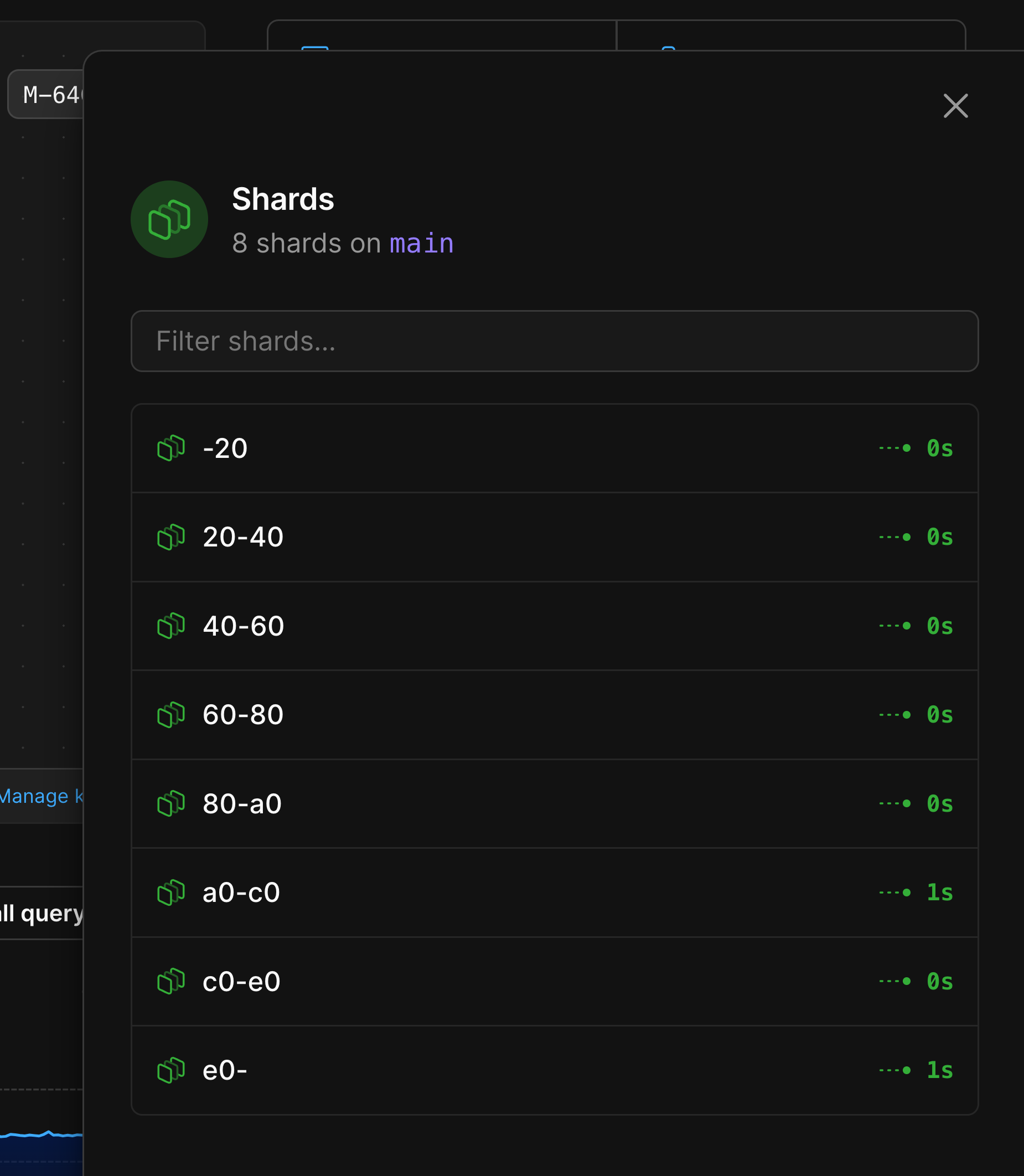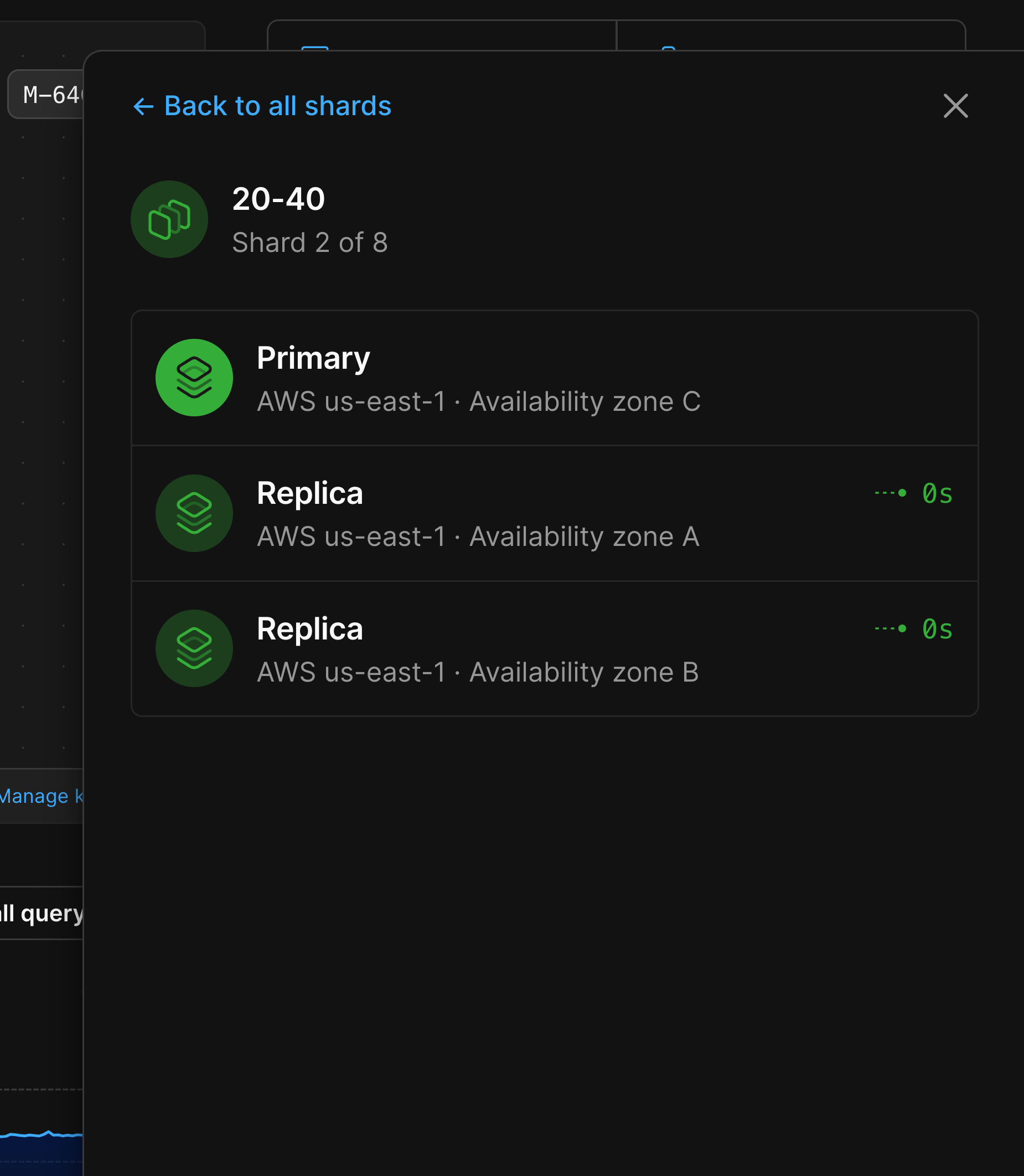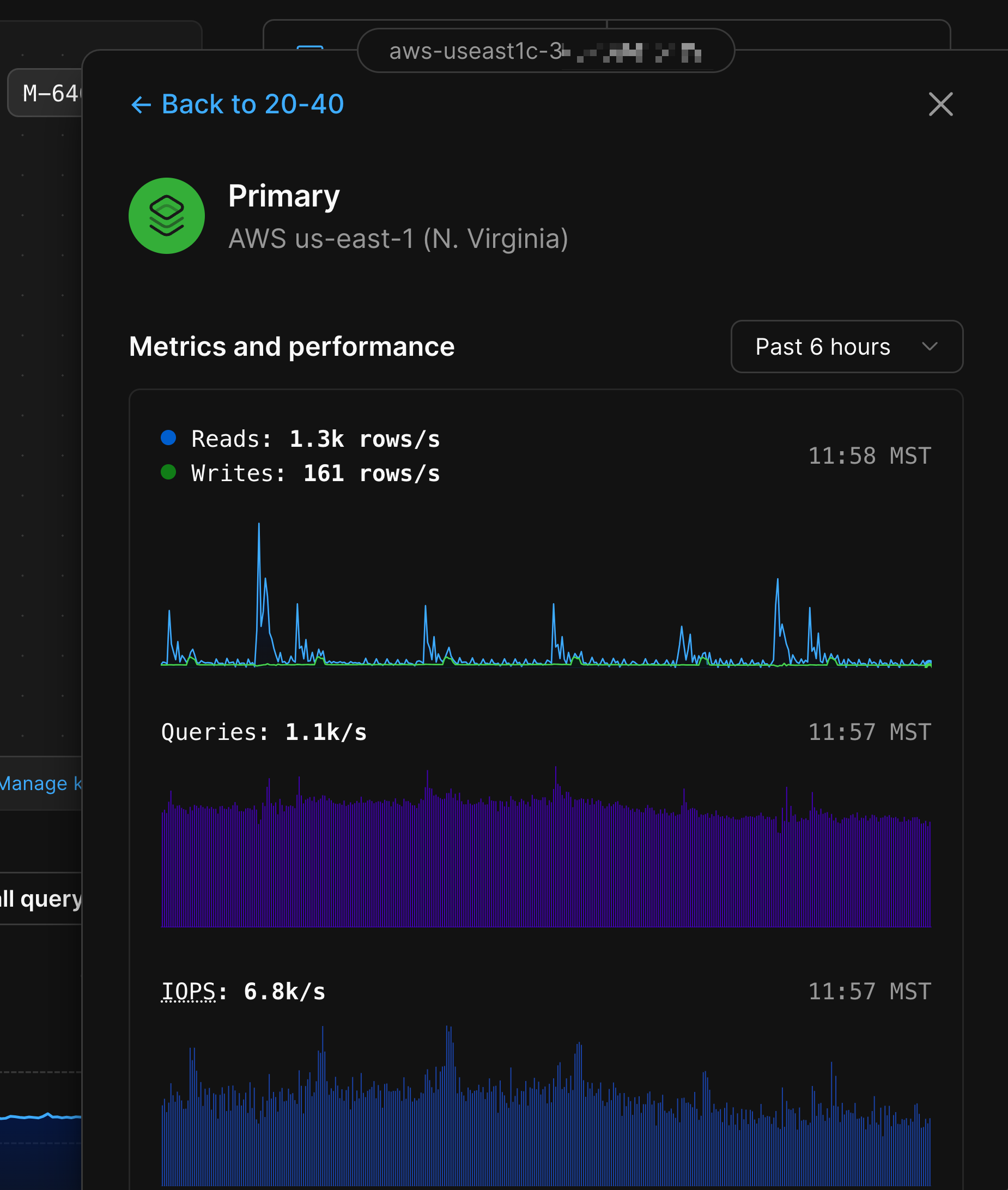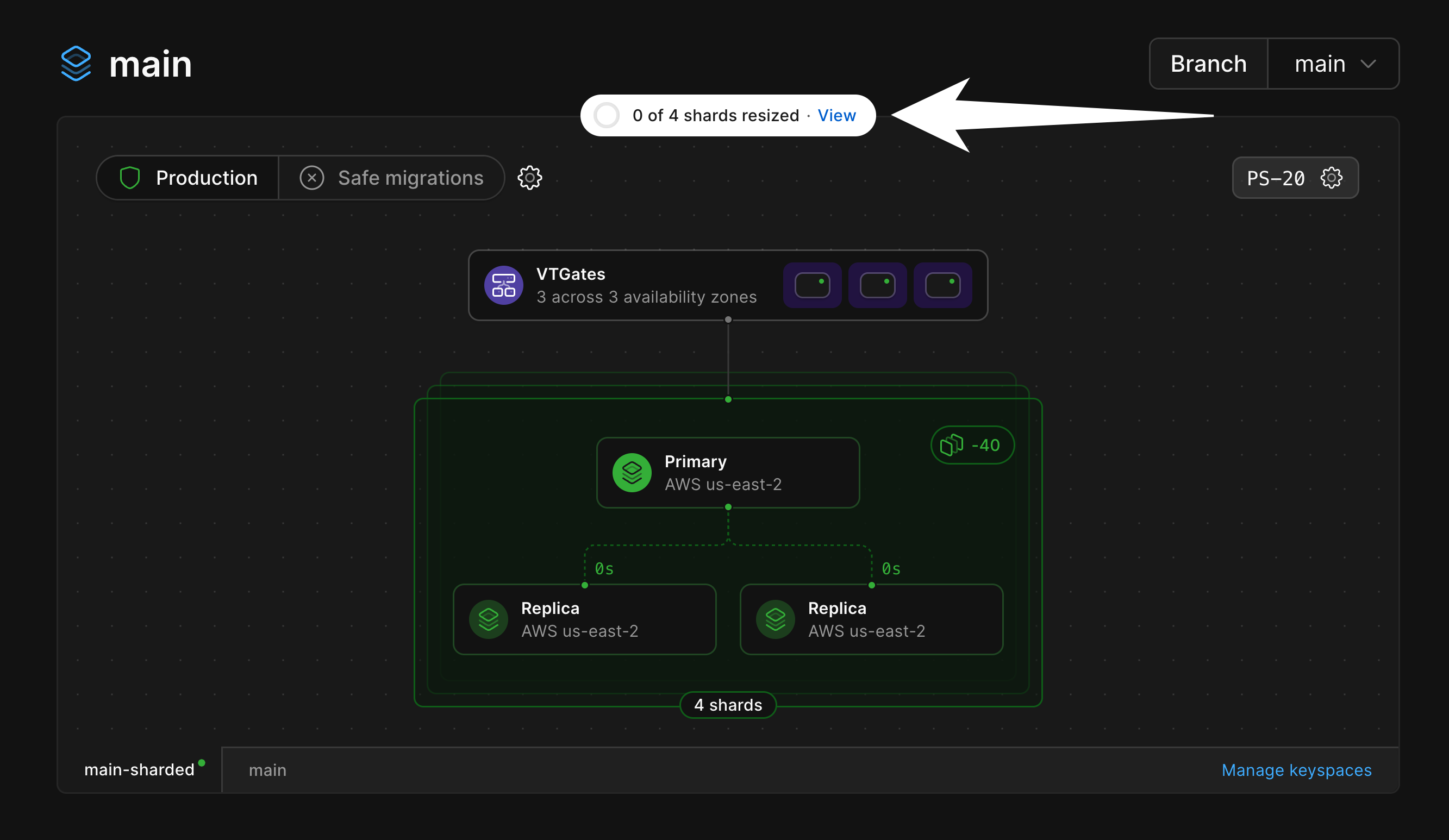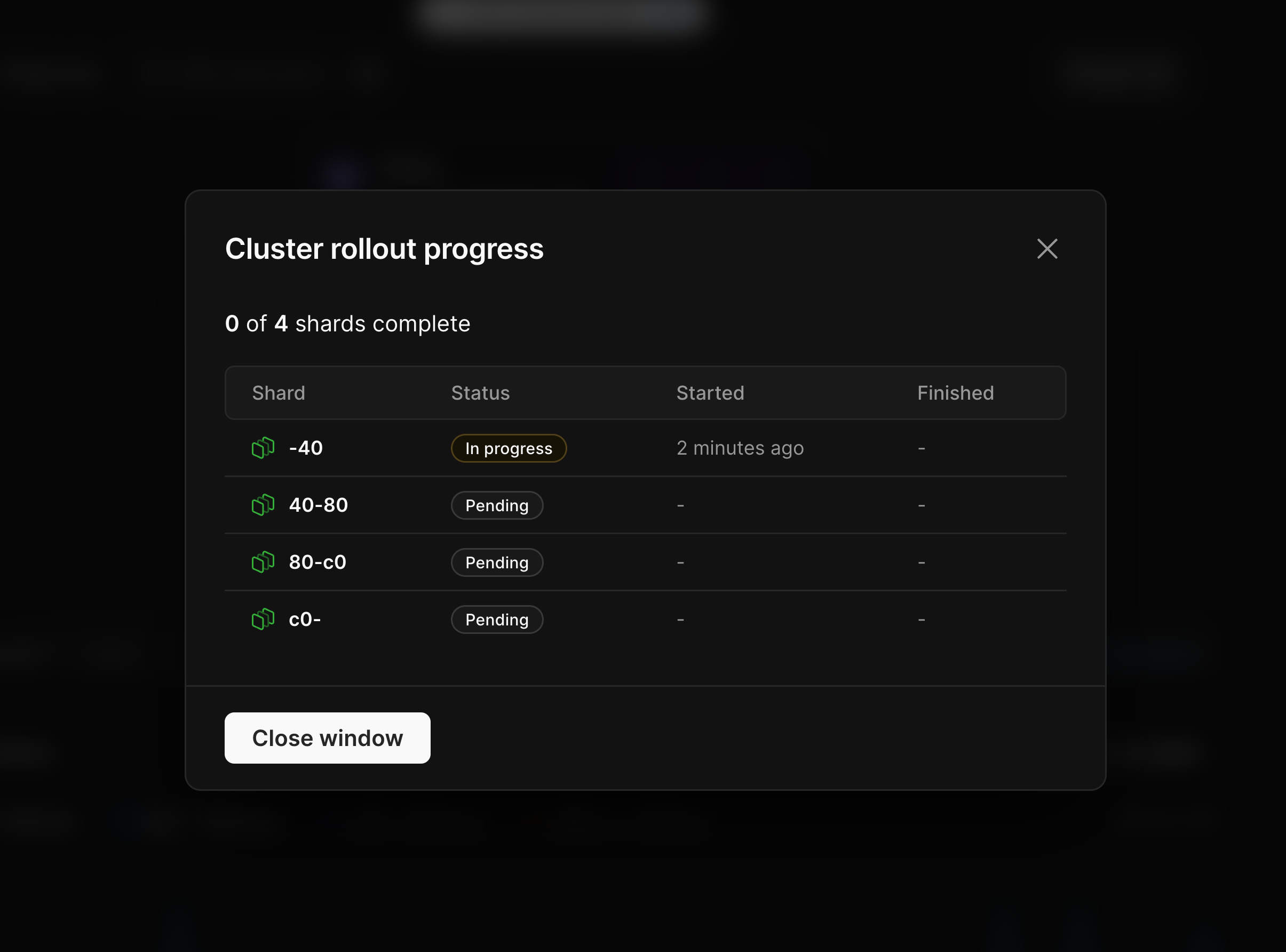Overview
We achieve these goals through a combination of MySQL, Vitess, and our own application and ecosystem we have built atop these open-source technologies. There is a great deal of infrastructure that enables our databases to be highly-available, secure, and resilient. In this article, you’ll learn about what powers PlanetScale databases and how you can view your database’s configuration on our app.The infrastructure diagram
After creating a PlanetScale account and joining at least one organization, you can create a database. Each new database has a single default keyspace — a logical database — with the same name as the database. On the dashboard of every PlanetScale database is a diagram outlining the infrastructure that powers the database.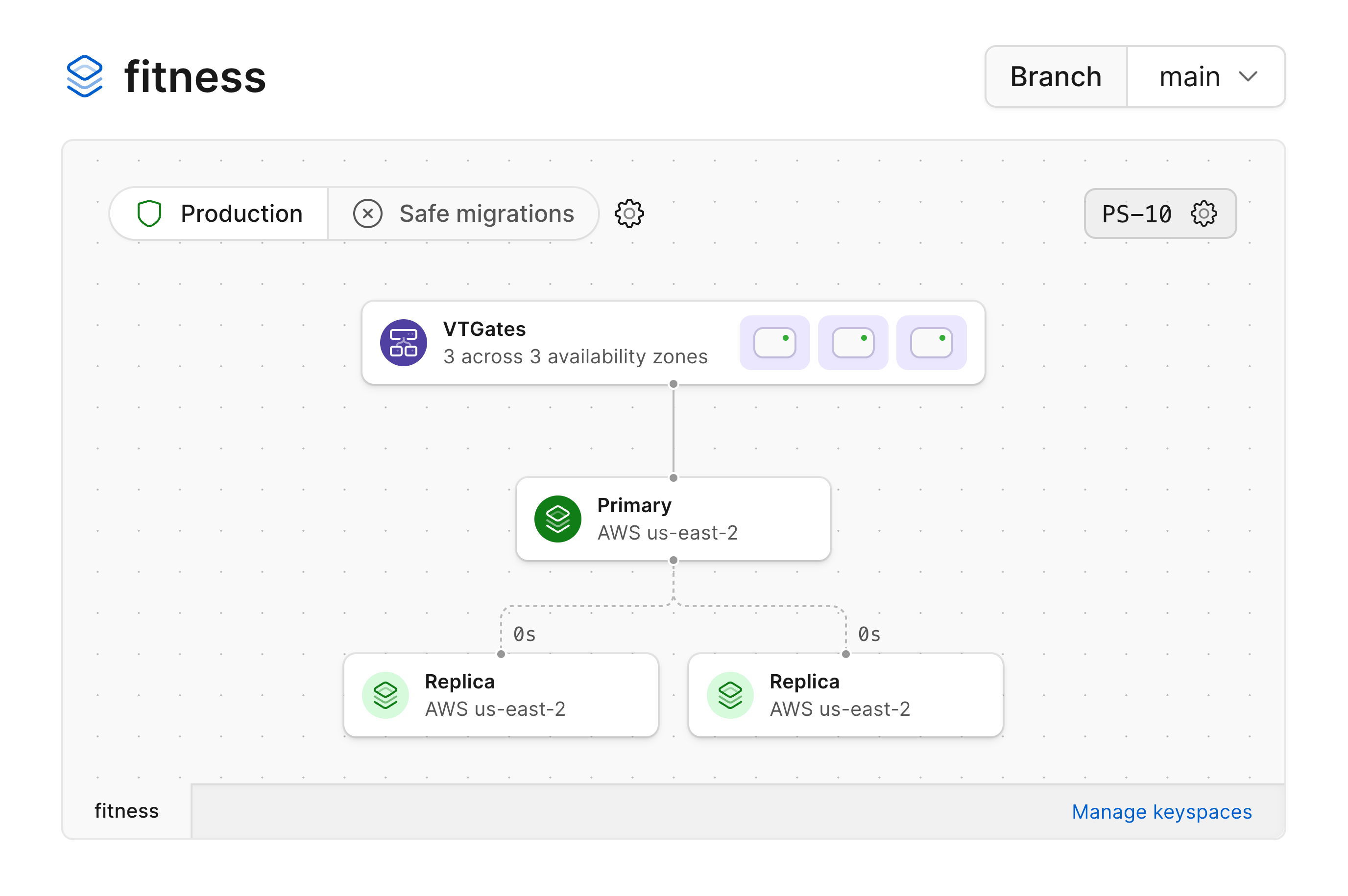

Production branches
Production branches are designed for production workloads, and as such are given enough resources to ensure high availability. By default, every production branch has a single primary MySQL instance and two replicas. Each primary also comes with 3 VTGates across 3 availability zones, which act as proxies for your MySQL instances. These are all pictured in the diagram for a production branch: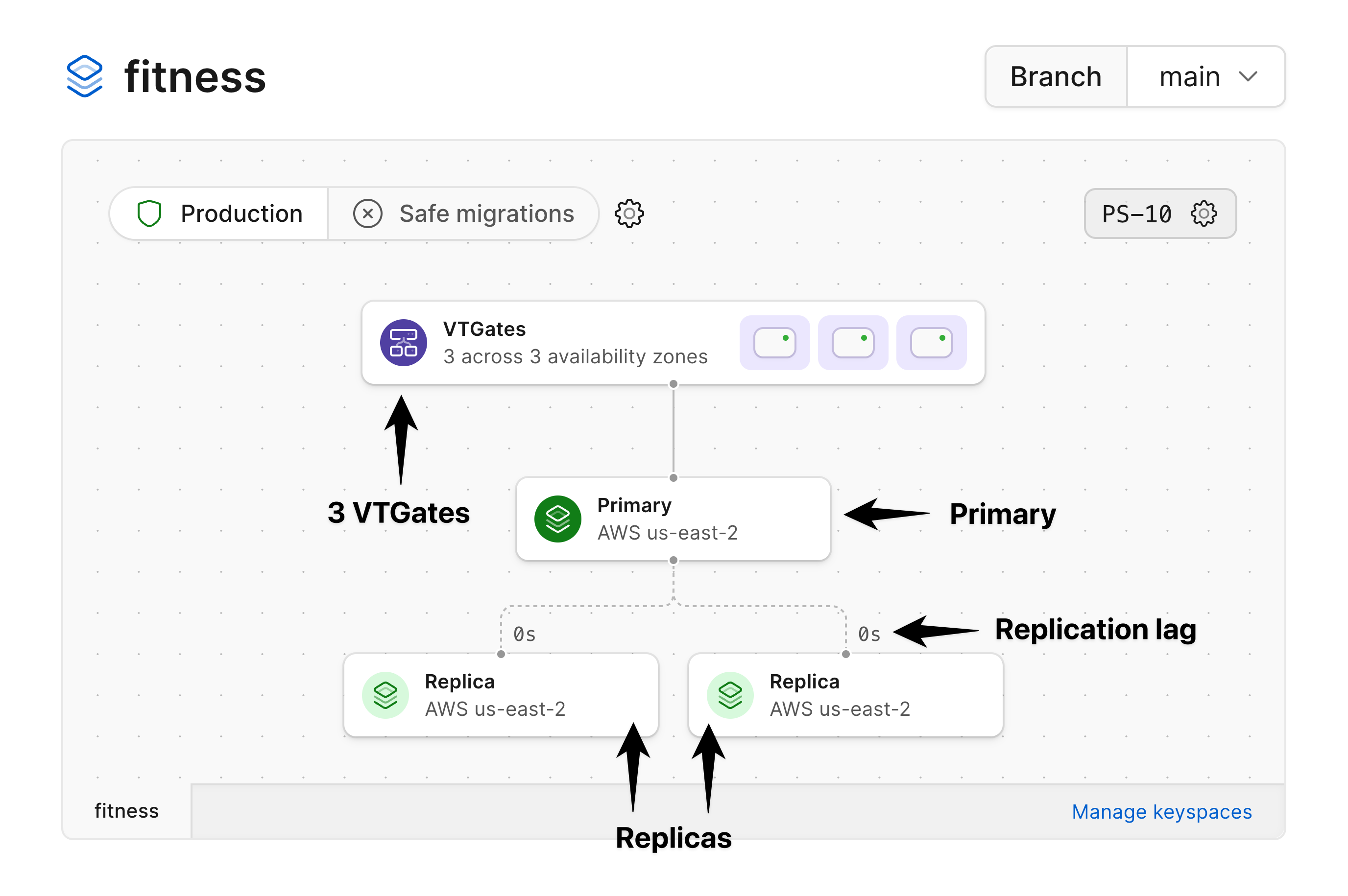
Development branches
Development branches are specced to enable the development and testing of new features and are not designed for production workloads. When a new development branch is created, a single MySQL node is created along with a VTGate that handles connections to that node. This is reflected in the diagram of a development branch.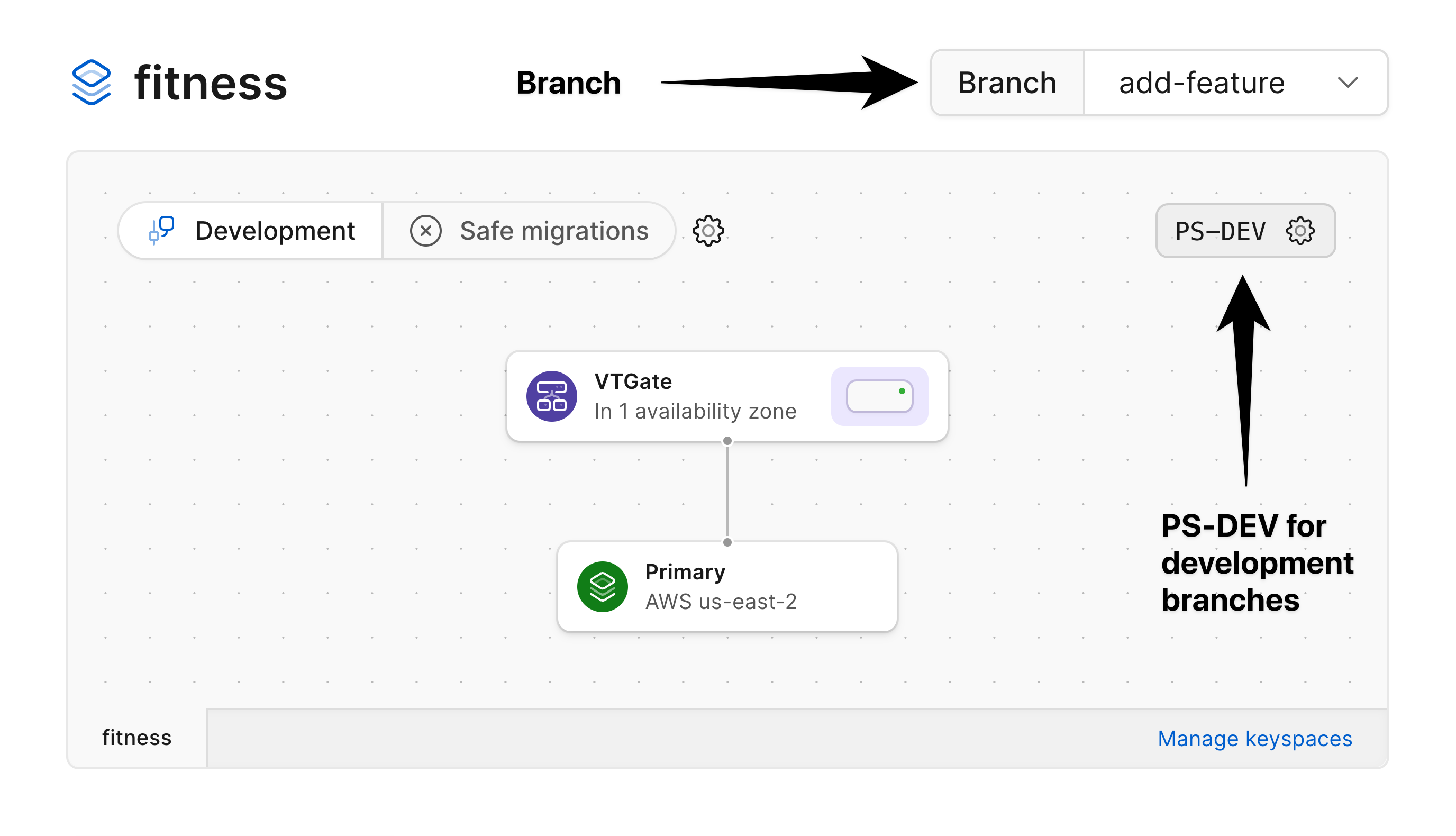
Read-only regions
The primary of your database is the only node that can accept writes, and it resides in a single region. You can add read-only regions to a branch which adds replicas in another region and can be used to serve read traffic. This can help reduce read latency for application servers that are distributed around the world. Below, you can see our database has the primary and two replicas inus-east-2 with read-only replicas added in both us-west-2 and eu-central-1.
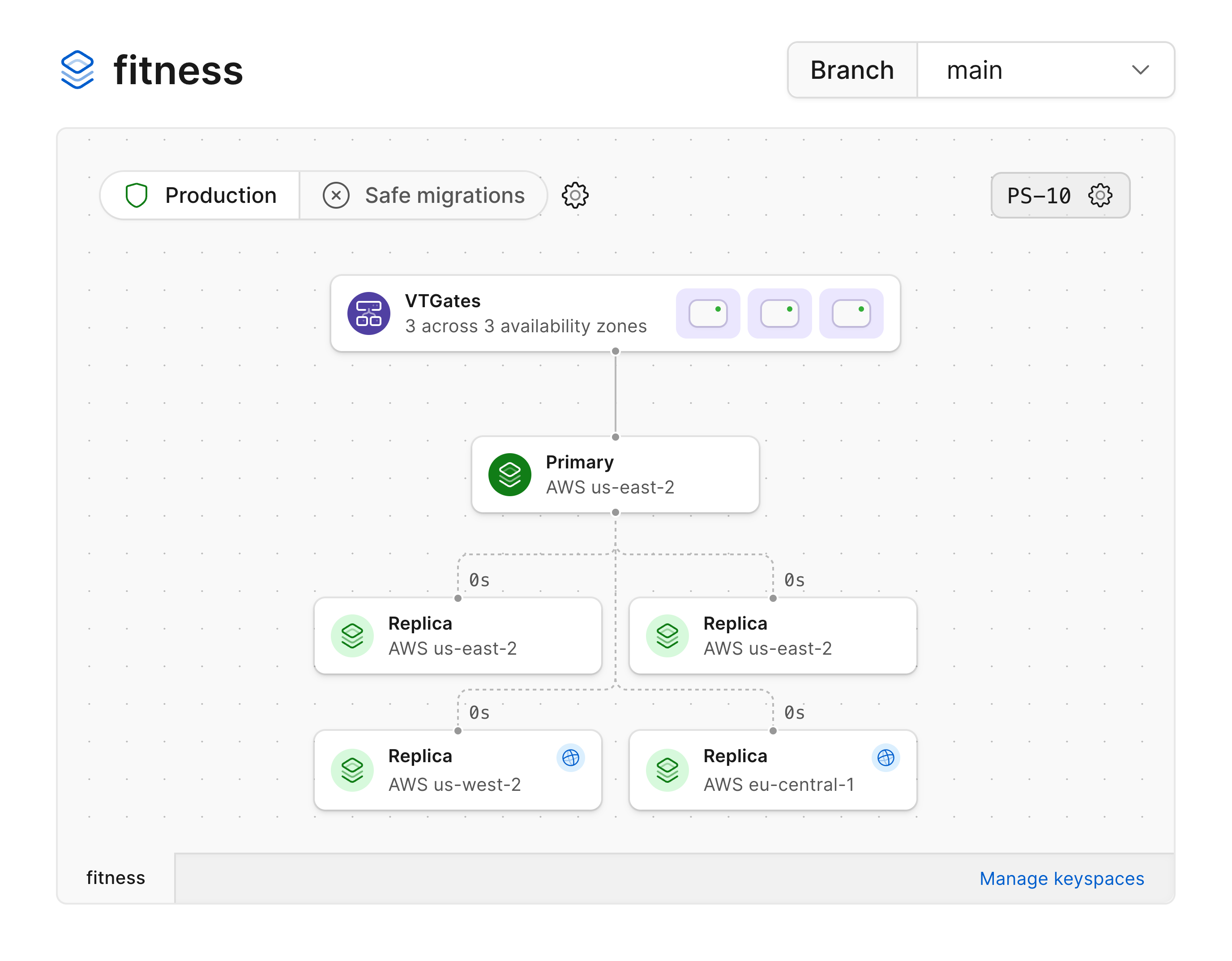
Infrastructure metrics
Each element within the infrastructure diagram for PlanetScale database branches can be selected to display additional metrics related to that element. These metrics are displayed in expandable cards that present themselves when an element is selected. By default, the cards display metrics from the last 6 hours but can be adjusted if additional data is needed.VTGates
The VTGate node displays the total number of VTGates that exist for a given branch, as well as the number of availability zones in which they live. Selecting the VTGates node will show the following metrics:- Number of connections.
- Latency.
- Queries received.
- CPU.
- Memory consumption.
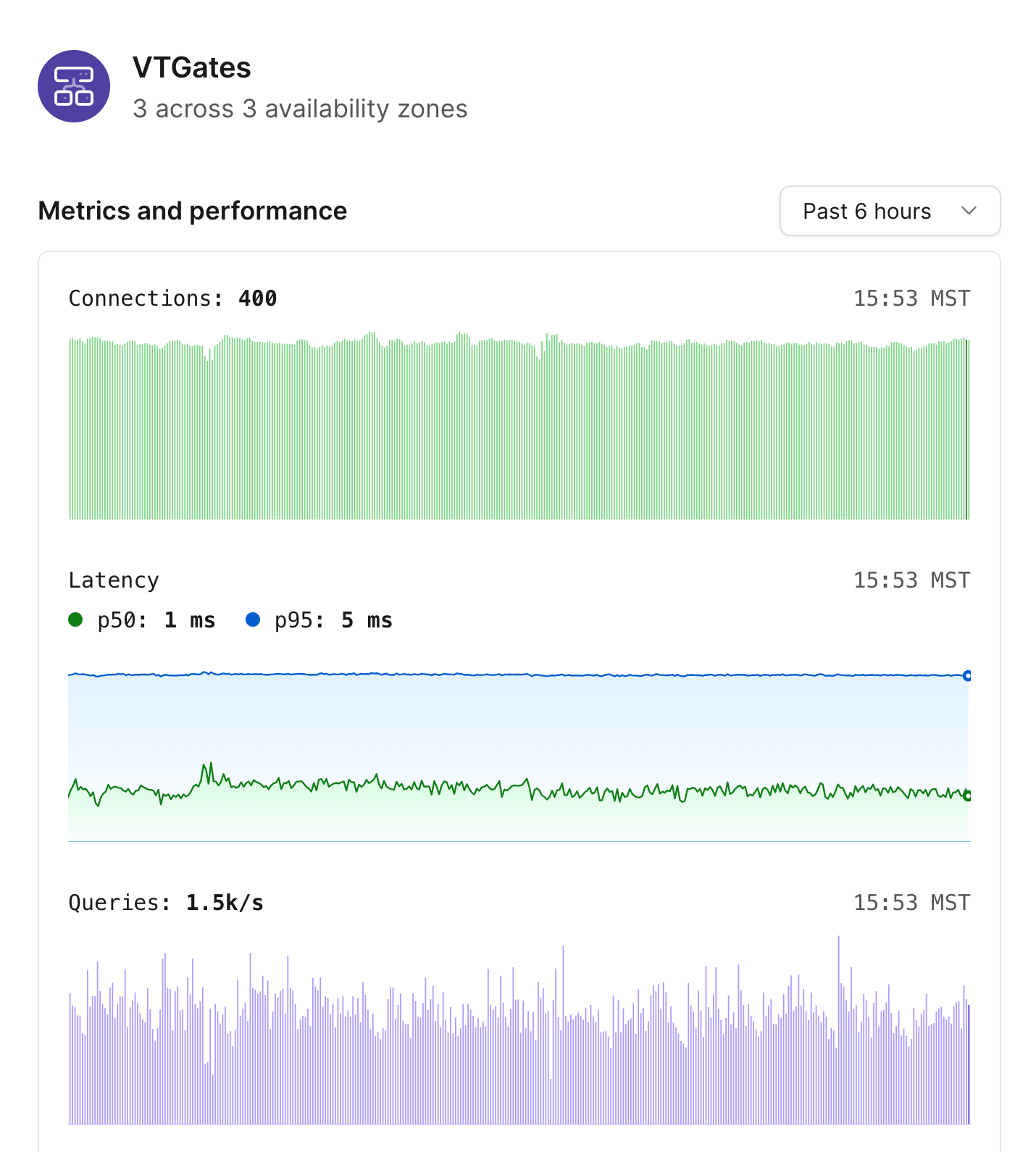
MySQL nodes
Each MySQL node in the diagram will display whether it is the primary node or a replica, along with the region where that node is deployed to. Clicking any of the MySQL nodes will display the following metrics:- Database reads and writes for that node.
- Queries served.
- IOPS.
- CPU and Memory utilization.
- Storage utilization over the past week.
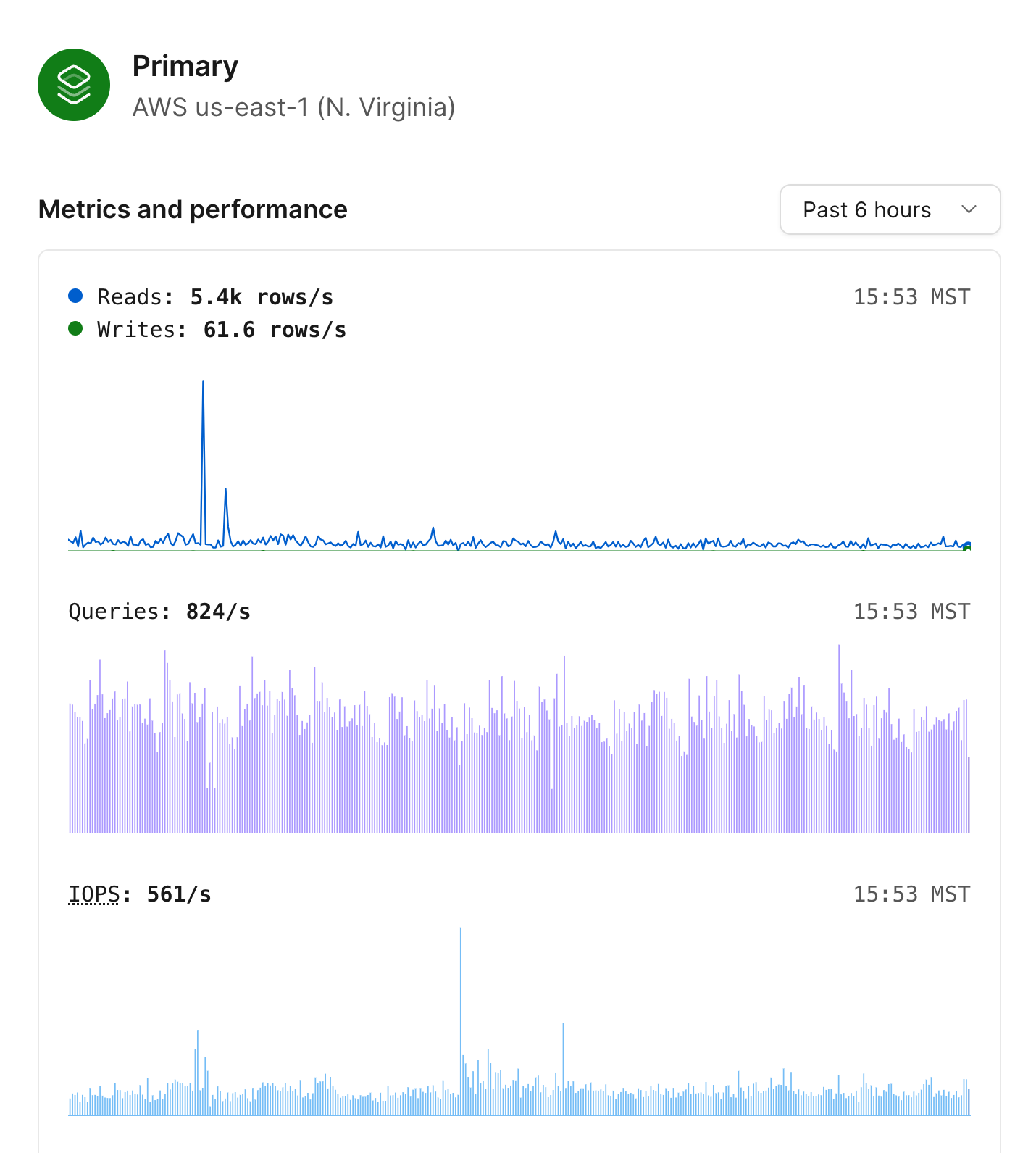
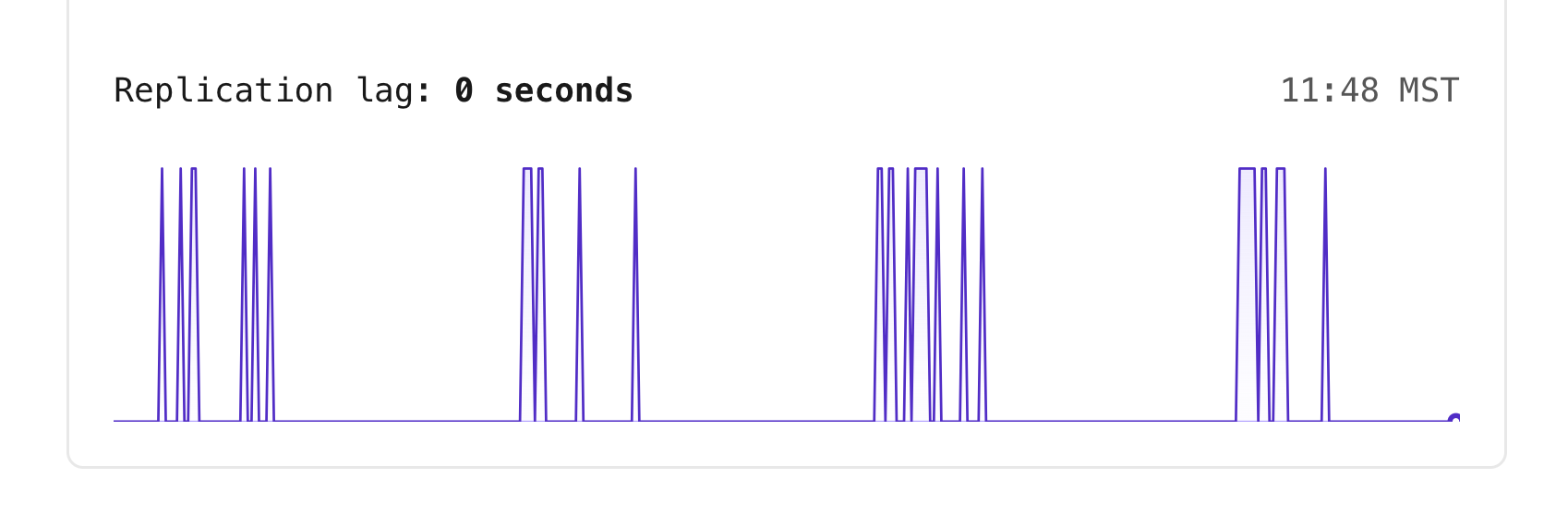
Replication lag at a glance
Within the infrastructure diagram, you’ll also notice that there is a number near the connection points for each replica. These numbers are a way to read the replication lag between the Primary node and that given node at a glance.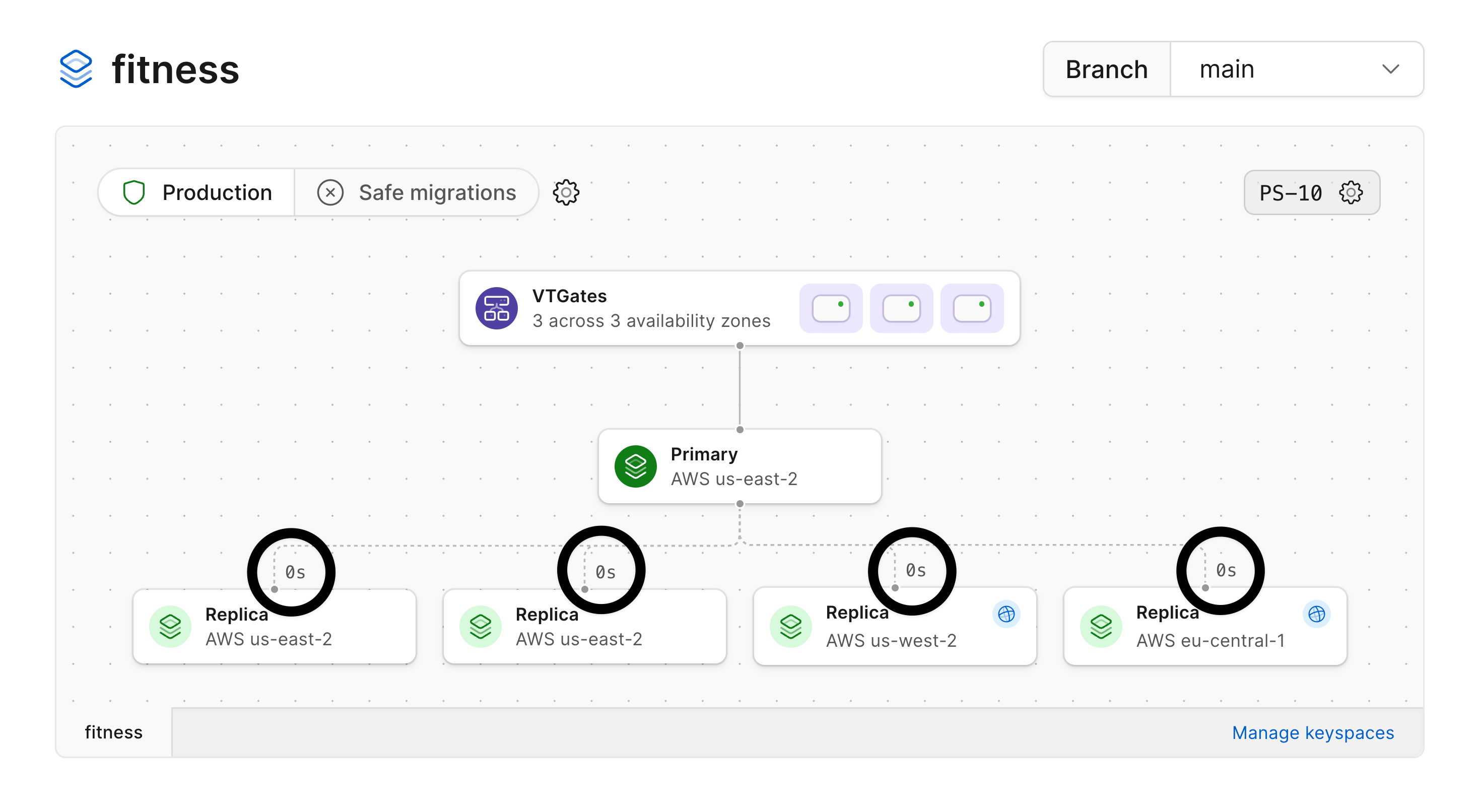
Database shards
If your database is sharded, the infrastructure diagram will represent that as a green stack of shards.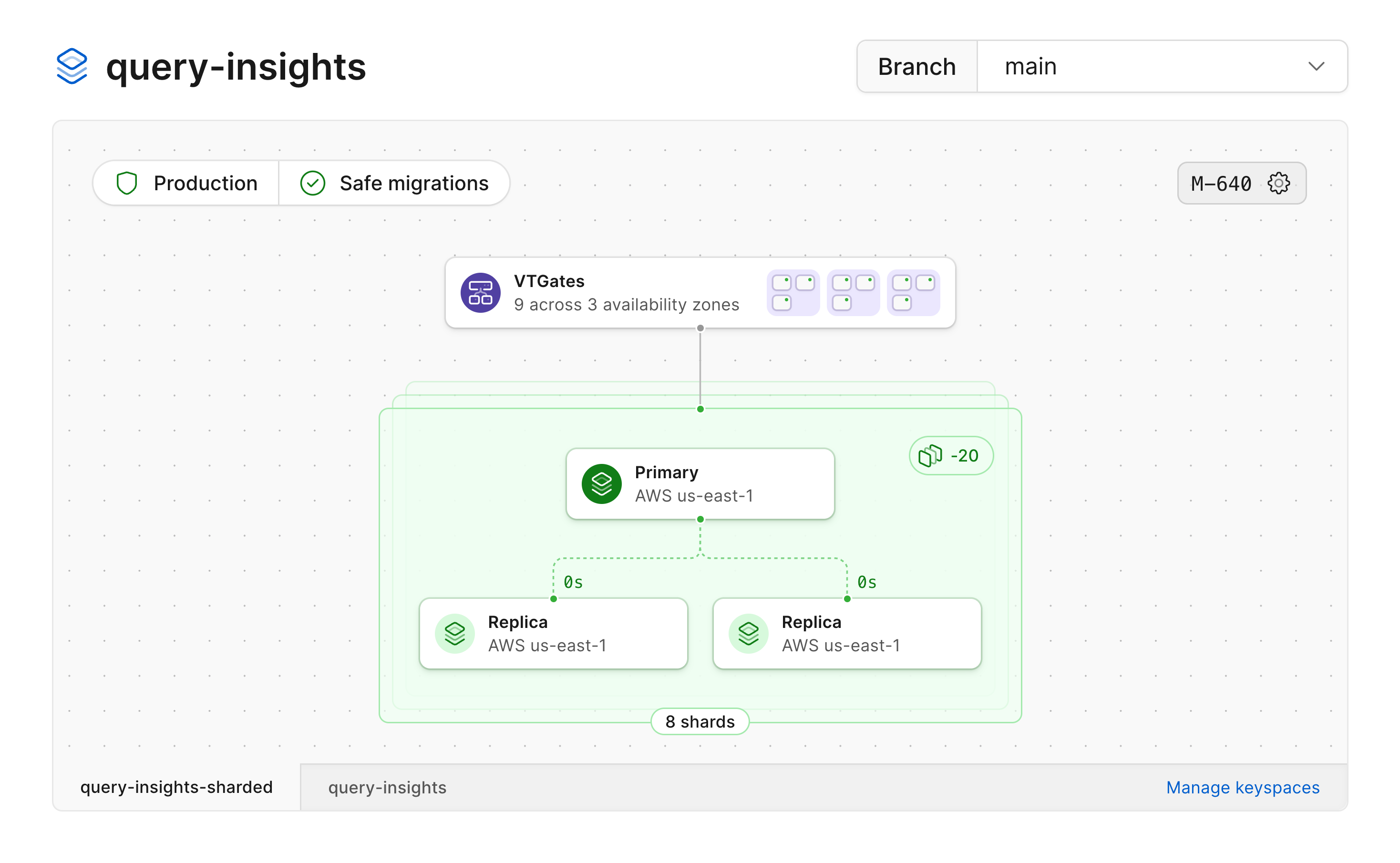
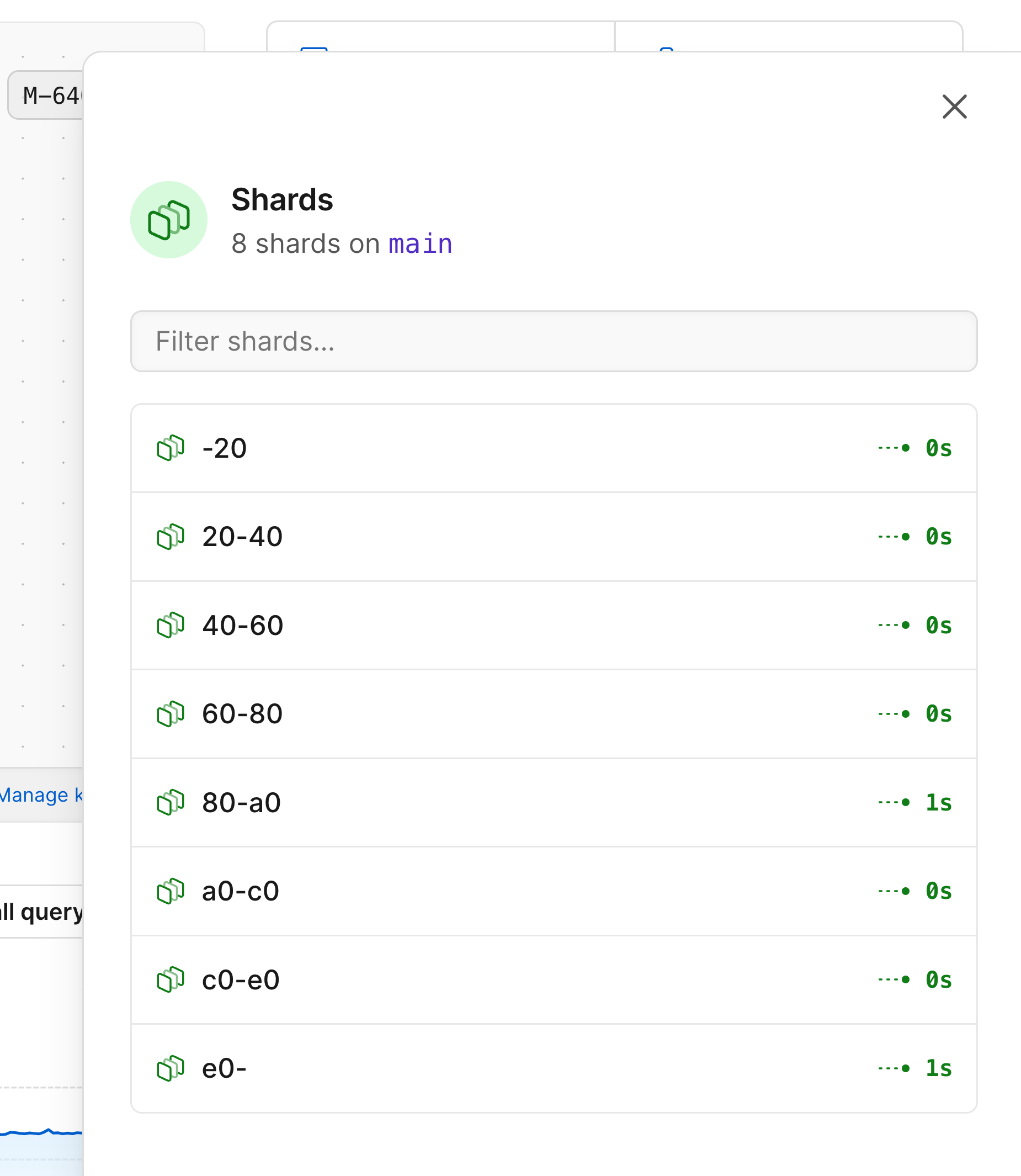
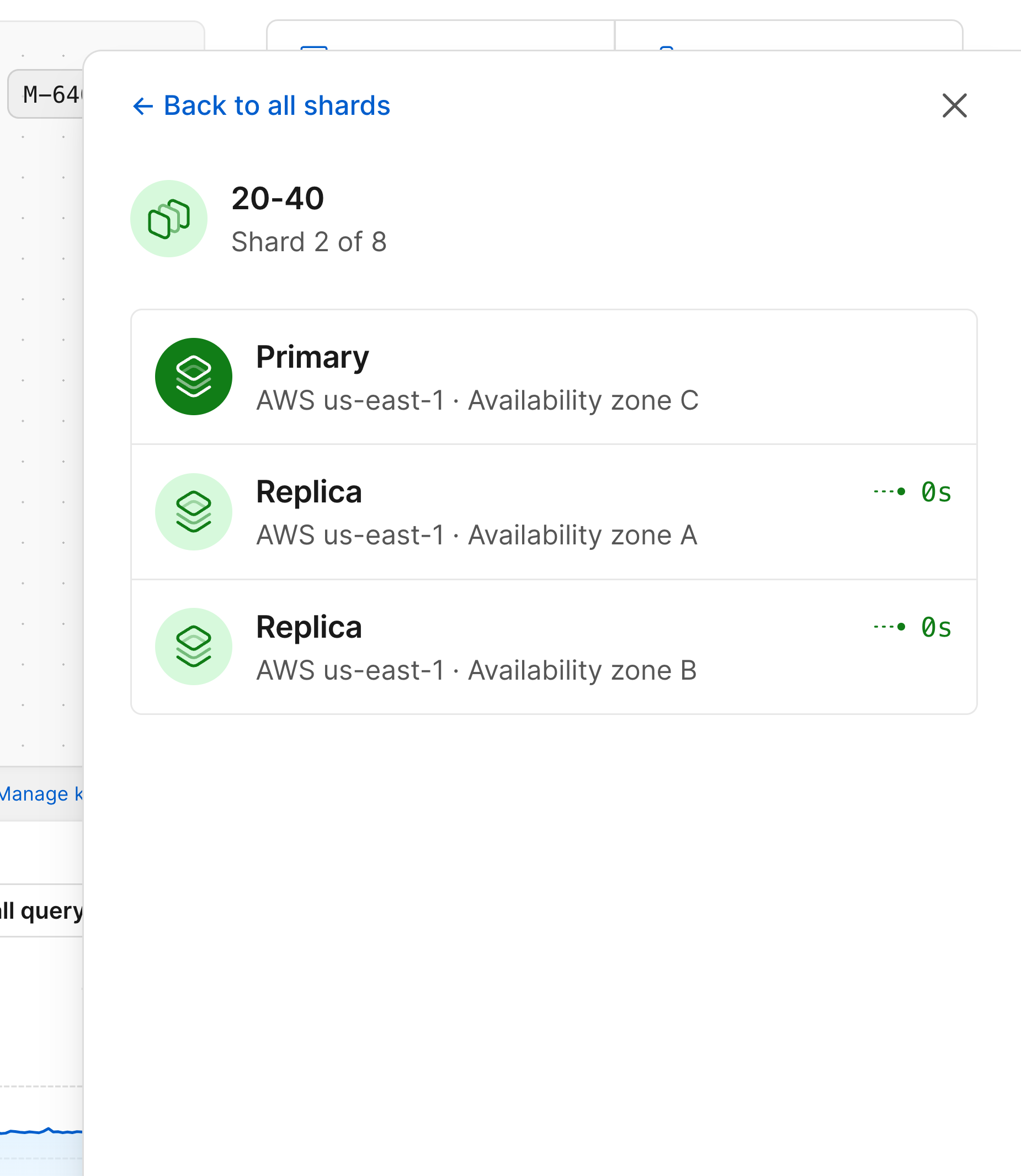
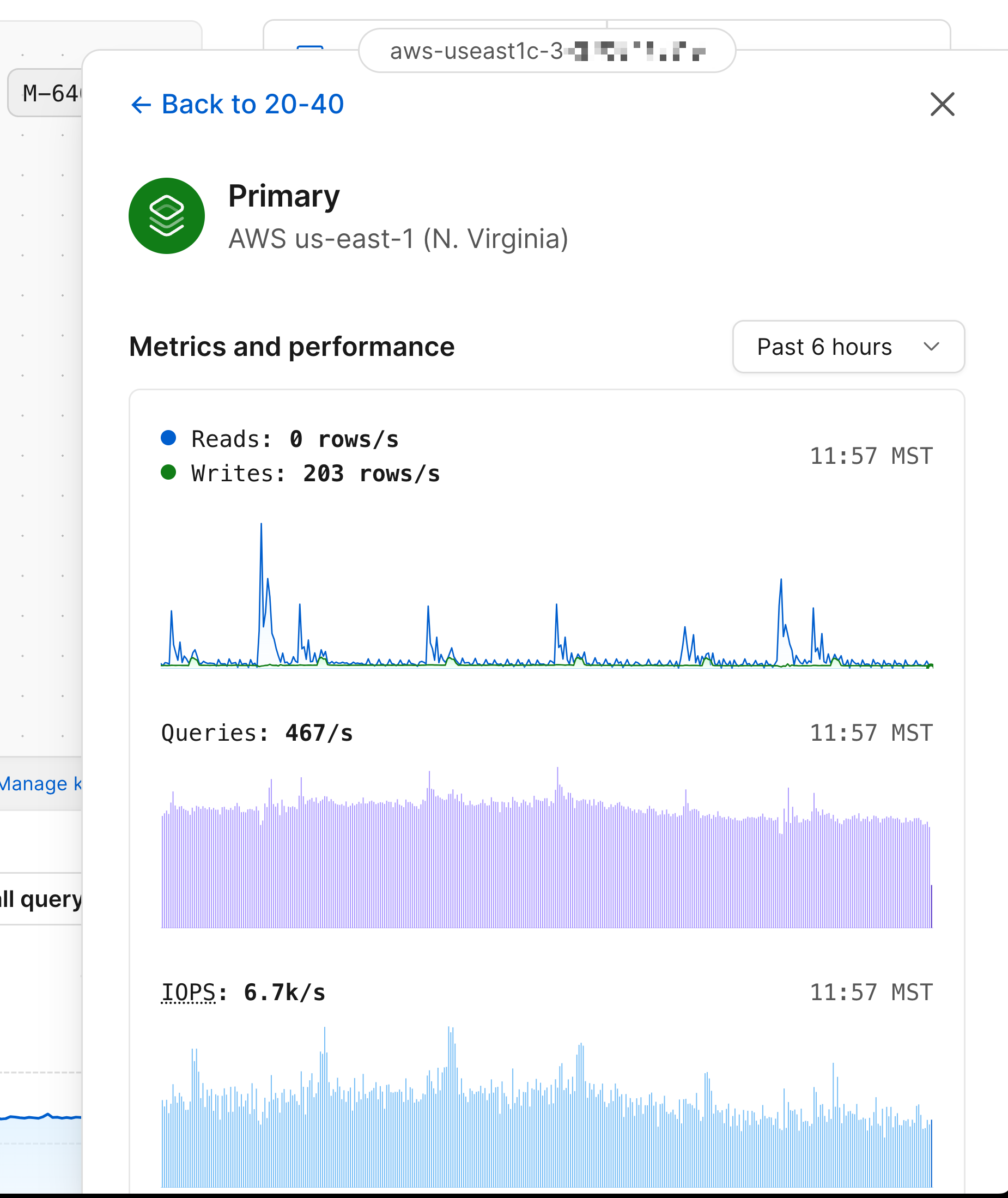
Resizing
You can use the Clusters page menu to resize your keyspaces. When a resize is in progress, this will be indicated at the top of the diagram.